#Archie Sonic Contributors
Text


My Little Pony/Transformers: The Magic of Cybertron #2 & #3: Retailer Incentive Covers
Cover Credits
Art: Adam Bryce Thomas
Editorial Team
Editor: Megan Brown
Consulting Editor: David Mariotte
#IDW#IDW Publishing#My Little Pony#Transformers#Starscream#Megatron#Pinkie Pie#Rainbow Dash#Fluttershy#Twilight Sparkle#Arcee#Optimus Prime#Unicron#Adam Bryce Thomas#Megan Brown#David Mariotte#2021#Archie Sonic Contributors#IDW Sonic Contributors
533 notes
·
View notes
Text
At this point we're used to old Archie Sonic contributors trying to do their own thing with their old creations in the wake of the Penders lawsuits, since they're now legally free to do so. Most infamously we have Penders spending over a decade working on The Lara-Su Chronicles with his huge cast of Angel Island and Acorn Kingdom characters, and we also saw Scott Fulop briefly try to pitch Mammoth Mogul as a comic superstar in his own right
But for once, we now have a former writer tweeting about how he's actually totally game for Sega to do whatever with his most famous Sonic character. And its coming from one of the most minor contributors to Archie Sonic, who arguably went on to be the biggest name who ever touched the series
That's right: prolific Spider-Man writer Dan Slott is ready to bring back Zonic the Zone Cop
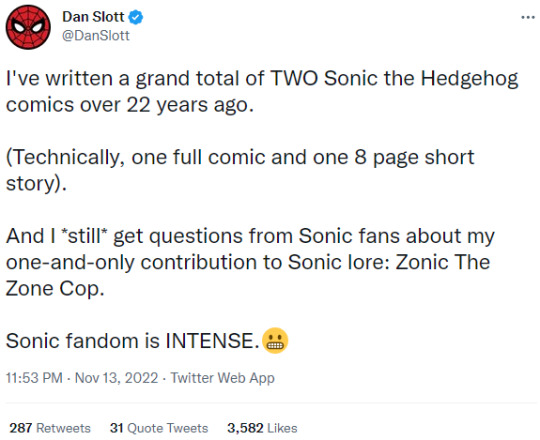
Zonic did have 1 gag going for him that I really liked. He was someone who maintained order across parallel worlds from the PERPENDICULAR dimension that ran thru all parallel dimensions. So he was always standing at a 90 degree angle from everyone else. (What was I smoking?) 🤷♂️
There's a Sonic creator who's super protective of all the characters he's created over the years to the point where SEGA doesn't want to use ANY of them in other media. I'm saying it here and now: I do NOT have that hangup with Zonic. SEGA, go to town! I am ready to play ball!
@SEGA, I am super-serious. I would be a dream to collaborate with. If you ever want to use Zonic The Zone Cop in a movie, cartoon, video game, breakfast cereal, you-name-it... the entire process would be headache free. It'd be smooth sailing the whole way. Call me. ☎
.@SEGA, I'm not kidding. It'd go something like this:
SEGA: We want to use Zonic.
ME: Sounds cool, Daddy-O.
SEGA: We'll pay this reasonable amount as a consultant.
ME: I'm in.
SEGA: We want to give him human teeth.
ME: Sounds nifty.
SEGA: No. Wait. We don't.
ME: All good, man.
Do I actually think this is going to happen? Fuck no. Never in a million years. I don't even know how serious Dan is being here despite the claims that he's actually super serious. He knows this is a silly minor character, even if there is, in fact, still a small subset of fans intrigued by the idea of an alternate universe Sonic who's an interdimensional cop. I just think it's funny that he even thinks about Zonic at all in a world where he wrote Spider-Verse
654 notes
·
View notes
Note
Just checked out your Ken Penders myths post. You think after learning all this stuff about how some stuff is misunderstood or exaggerated about him that you might have a more softened view of him than you might have had previously? Maybe even think that his large hatedom is misplaced? Seeing all that makes me feel less mad since it looks like he didnt go out of his way to fuck Archie or anything.
i definitely think the hatedom around penders is exaggerated, yeah. some of the shit people will say about him is wild, and i've tried (in vain) to correct people where i can. people get the facts of the lawsuits wildly incorrect and make it sound like archie never did anything wrong. people also take all sorts of shit out of context to try and paint him as a Literal Actual Child Predator for wanting to write typical dumb teen soap opera drama with sonic characters. people are just always frothing at the mouth looking for any excuse to dunk on him
that being said, i still think he's a weird asshole who never misses a chance to rile up reactionary nerd hate campaigns against any other sonic comic contributors he's perceived as being against him, particularly ian flynn. and also he still does shit like tracing the work of other artists, or threatening legal action because the sonic movies depicted knuckles as having a dad, which is an idea he thinks he owns. so some of his negative public image is definitely deserved. but i also have to pity the guy
147 notes
·
View notes
Text
Who Did What for Sonic the Hedgehog's 900th Adventure
So the 900th Adventure was basically this years Annual in spirit, but instead of multiple shorter stories, it told one big story, but with the number of writers and art teams that you would get in a multi-story annual anyways. Sure you could easily read the credits, but it's more fun this way. Obviously spoilers ahead so everything past part 1 is is gonna be under a Read More
Part 1 (pages 1-6): Set-up with Tails
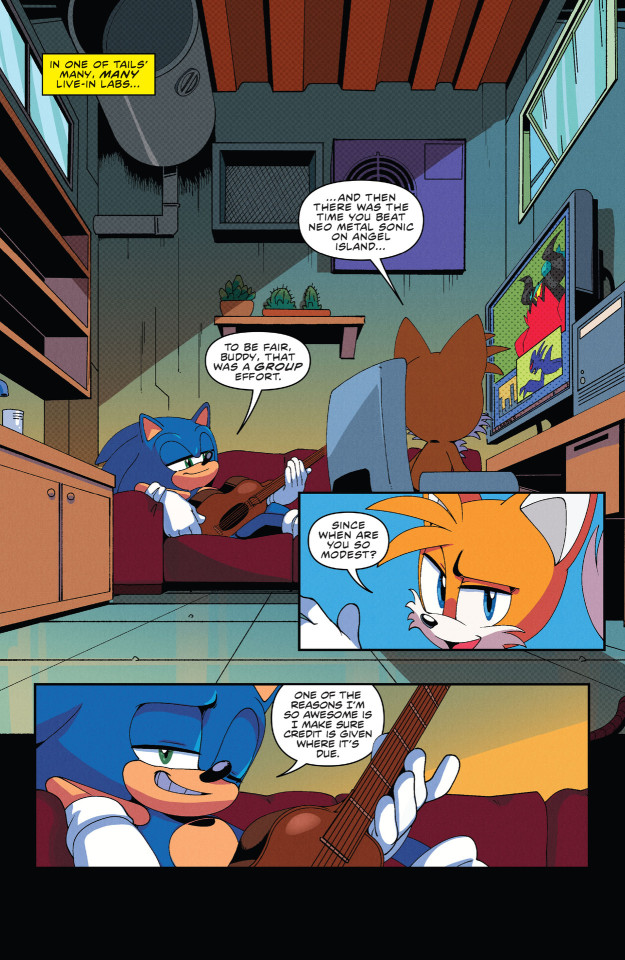
Writer: Ian Flynn (the original main writer on IDW Sonic and post-Metal Virus continues to be one of the main writers, including being the main writer of IDW's Classic Sonic specials. Been with the franchise since becoming a writer for the Archie comics back in '06 and served as the writer for Sonic Frontiers)
Artist: Adam Bryce Thomas (one of the main IDW Sonic artists. been around since the latter half of Archie's reboot)
Colors: Valentina Pinto (initially a secondary colorist whose biggest credit was doing the Imposter Syndrome miniseries, recently seems to have graduated to being one of the main colorists this year)
Part 2 (pages 7-12): Amy and the Orca

Writer/Artist: Evan Stanley (the other main writer of IDW Sonic post-Metal Virus as well as one of the main artists, been around since late in Archie's pre-reboot era)
Colors: Gigi Dutreix (regular cover artist and occasional inker and has even written a few stories; co-authoring Victory Garden from the 2019 Annual and its follow up Future Growth, which they also colored, and solo-writing The Catalyst from 2020's Annual)
Part 3 (pages 13-18): Knuckles and Metal Sonic
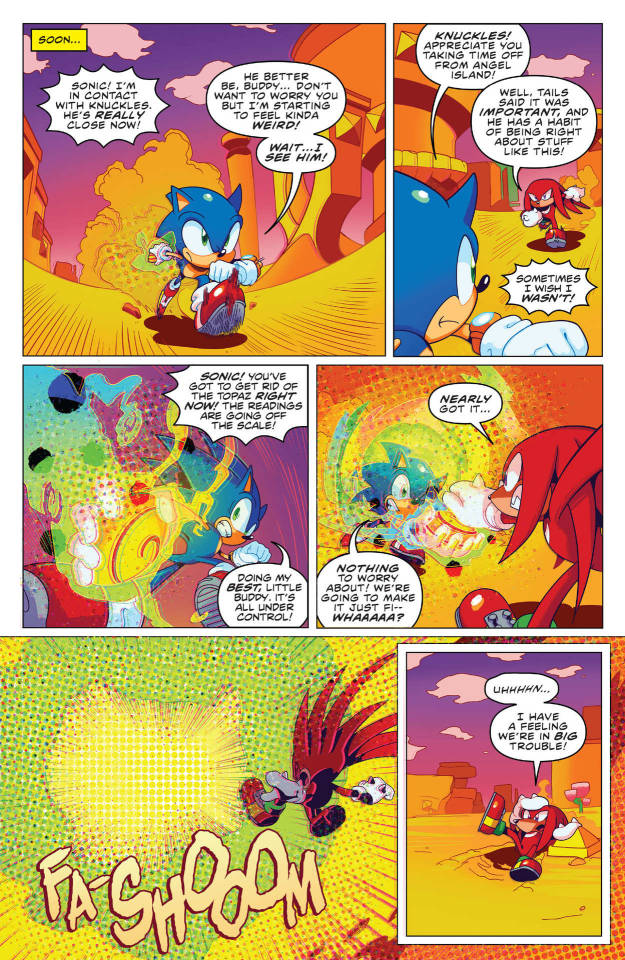
Writer: Nigel Kitching (one of the main writers of the old UK Sonic the Comic published by Fleetway Editions back in the 90s)
Artist: Mauro Fonseca (regular artist, major credits so far include Sonic Learns to Drive from the 30th Anniversary Special, co-designing Surge & Kit, doing the A-covers for the Imposter Syndrome miniseries, and doing a bunch of stuff in the concurrent and upcoming main book issues. Also relevantly used to be a regular contributor to the Sonic the Comic-Online fan continuation)
Inks: Rik Mack (recent regular inker, being the main inker on Mauro's more recent interior art for the comic as well as inking other artists, most notably on Tails' 30th Anniversary Special. Recently did some coloring on the back-half of issue 61 as well. Also another former StC-O regular)
Colors: Reggie Graham (one of the main colorists on IDW Sonic post-Metal Virus, after having been a regular on covers beforehand, as well as being another former StC-O regular)
Part 4 (pages 19-24): Eggman and his Mech

Writer: Daniel Barnes (writer of Weapons from the 2022 Annual and the Scrapnik Island miniseries)
Artist/Colors: Min Ho Kim (fairly recent addition of the IDW Sonic crew, being a regular cover artist since Scrapnik #1. Also the character artist on The Murder of Sonic)
Color Assistance: Evan Maly
Part 5 (pages 25-30): Blaze and Cream
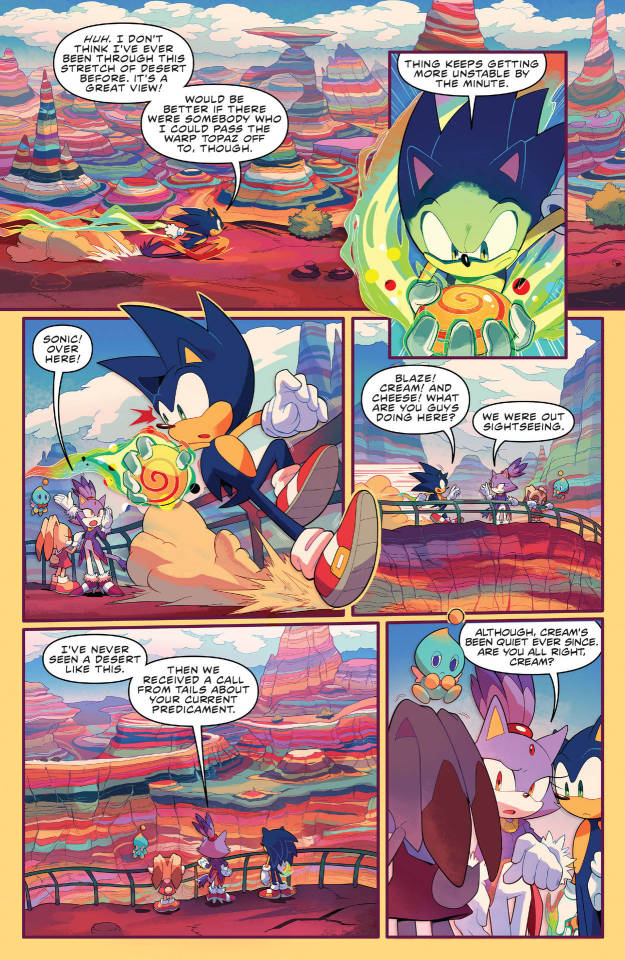
Writer/Artist: Aaron Hammerstrom (regular artist, most prominently being the main artist for IDW's Classic Sonic stuff. Also previously wrote/drew the 2022 Annual story Rough Patch)
Inks: Matt Froese (regular inker, mainly works on Aaron's art. Most notable non-Aaron credits include the two Yardley-drawn issues of Zeti Hunt and the first and last parts of Trial by Fire)
Colors: Nathalie Fourdraine (The 1:10 Retailer Incentive variant cover artist for every issue the main book as well as semi-regularly doing covers for side books. Served as the colorist for the Classic Sonic stories Dr. Eggman's Brithday and Amy's New Hobby, as well as the colors and A covers for the Scrapnik Island miniseries)
Part 6 (pages 31-36): Babylon Rogues & Shadow/Rouge

Writer: Caleb Goellner (writer of the Team Sonic Racing one-shot, the 2019 Annual story Jet Set Tornado, and the 2020 Annual story Reflections)
Artist: Abby Bulmer (regular cover artist, as well as artist of the 2020 Annual story The Catalyst and the 2022 Annual story Hero Camp. Notably way back in the day was the artist of the very first StC-O story, and her time on 2000 AD often involved her serving as a colorist for Richard Elson, one of the main StC artists.)
Colors: Heather Breckel (IDW MLP's main colorist, who's been a recurring secondary colorist throughout IDW Sonic's run, often filling in for other colorists)
Part 7 (pages 37-40): The Warp Topaz Cave

Same team (Flynn/Thomas/Pinto) as part 1
#Sonic the Hedgehog#IDW Sonic#Ian Flynn#Adam Bryce Thomas#Valentina Pinto#Evan Stanley#Gigi Dutreix#Nigel Kitching#Mauro Fonseca#Rik Mack#Reggie Graham#Daniel Barnes#Min Ho Kim#Evan Maly#Aaron Hammerstrom#Matt Froese#Nathalie Fourdraine#Caleb Goellner#Abby Bulmer#Heather Breckel
32 notes
·
View notes
Text
youtube
Meet the fifth Hunting Dog...
...So, please, watch "Bungo Stray Dogs" Season 4 Episode 10 first, then come back and watch it again with my audio commentary, because I'm going to spoil who the fifth Hunting Dog is. You should skip ahead to 18:00 to avoid a lot of those spoilers.
(The actual commentary was supposed to start at 18:00. But I didn't time the audio with the episode very well after the countdown. Please add 17 seconds after I finish saying "3, 2, 1, unpause" before unpausing the episode, and that should fix the lack of syncing.)
Content warnings for discussions about depictions of blood, violence, torture, and death.
SPOILER WARNING for content up to Chapter 106 of the "Bungo Stray Dogs" manga, as well as spoilers for "Fullmetal Alchemist," "Jujutsu Kaisen," "My Hero Academia," the Archie Comics "Sonic the Hedgehog," and "Blue Exorcist."
What do you think of that fifth Hunting Dog reveal? Please share your thoughts in reblogs or tags.
Thanks to Ko-fi and Patreon contributors Emily Lauer, Ellak Roach, and Alexis Duran!
A transcript is available here.
You can listen and download an audio version at Substack or with the RSS link.
You can support my efforts on Ko-fi and Patreon.
0 notes
Text
Fans of Sonic: May I present my Ted Talk focused on the Comics
Archie =/= IDW Comics.
I feel like a lot of Archie fans are still bitter about the cancellation of their favorite series even after the nail was put into the coffin 3 years ago. Since that ask got me into a ranty mood, I figured it was only appropriate to delve into the big clusterfuck storm that was the Sonic The Hedgehog Archie Comics.
The comic series was published on November 22nd, 1993 by Archie Comics 4 months after DiC Entertainment’s “Sonic The Hedgehog” animated series started airing on ABC. Unfortunately, ABC would cancel the series prematurely at 2 seasons even though it was originally intended for a 3 season run. Leaving the fans of the animated series to rely on the comic books for answers regarding what would’ve happened if they’d gotten their final season.
The Archie series had an impressive overall run of #290 issues spanning across 24 years of publication. However, the true cancer was seeded after one of the main contributors of the comics took Archie and SEGA into a fierce legal battle.
Ken Penders vs. Archie & SEGA lasted from 2010 to 2012 after both companies failed to challenge his copyright filing to the U.S. Copyright Office in April of the same year. All parties settled outside of court which resulted in the continuity change in the comics with the Second Genesis Wave arc. This arc effectively removed many of Ken Penders’ now copyrighted characters and characters other contributors were also planning on copyrighting themselves.This arc would steer the longtime 1993 animated series focused comic into becoming more reliant on the game universe instead. A list of mandates were given by SEGA to Archie Comics about what they could and couldn’t do in their comic series after the lawsuit was settled. The Archie series would continue publication for a few more years until Archie cancelled all planned issues for Sonic in 2017 in 2016.
SEGA of America confirmed on July 19th, 2017 that they were terminating their comic book publishing program with Archie Comics on their twitter account. In that statement they confirmed to the fans they were planning to “...take a different direction for the series that will be announced at a later date.”
On July 21st, SEGA and IDW announced they would be collaborating together to bring a whole new era of Sonic comic books. The first issue was published on April 4th, 2018 and has continued to be one of the highest selling comic series on the market today.
So why is the IDW series performing much better than the Archie series even though they were going strong for 24 years? There’s 2 reasons.
1. The new IDW series is reliant on game lore and ONLY game lore. At the time of writing this in January, 2020 there has been no sign of the freedom fighters making their comeback in this new era of sonic comics. However that isn’t to say that SEGA might not allow IDW to include them later on. But I don’t think it’ll happen. Especially if they planned on taking this series into a new direction away from what Archie was doing. Now that the comic is being rooted firmly in game lore and game canon history, sonic fans have a comic book that any fan at any age can appreciate since it draws from ALL of the games that have been currently published by SEGA.
2. SEGA is Collaborating this time instead of partnering. What’s the difference? I hear you asking. Well there’s a big difference:
In a partnership, you’re working in a legal contract where you’re associated in a joint business. These associations can range from inactive to proactive involvement from either party. In the case of Archie and SEGA, SEGA allowed Archie to have their way for a good portion of their publication partnership. Only giving them rules to obey in terms of what they did with their characters and what was off the table. But that loose freedom came to an end after the Penders fuck up. Archie lost SEGA’s built up trust by not providing the legal proof they needed in order to toss Penders’ copyright out the window so they could reclaim the characters he took. Which lead to SEGA getting stricter in how their property was used by their company.
In a collaboration however, you’re actively involved in the production of a product with the other party. Making it equally theirs AND yours. SEGA collaborating with IDW in this new era of Sonic makes them more appealing to Sonic fans who’ve grown more familiar with the games instead of the 1993 animated series. It’s this recognition that gives the comic a timeless appeal to them as well. Since anyone who has played a sonic game can recognize the technology they use in the comic from games like Sonic Riders Zero Gravity and Sonic Forces. They get references to Sonic Unleashed and Sonic Adventure 2 Battle. But Archie? Unless you read the series from the very beginning and you’ve watched the Sonic The Hedgehog 1993 series, you don’t care about characters like Sally Acorn and Bunnie.
When you lose a series you grew up on, I know how hard it is to admit it’s gone. How there’ll never be a continuation of the series that once brought you joy after school or after a very long day at work. It sucks. But the lengths some people have gone to in order to shit on the new IDW series gives me a headache.
No it’s not a video game. But that doesn’t mean that SEGA doesn’t have anything to do with the series. They’re just as active as the main staff. America has had their way with SEGA’s characters a bit too long and the main in Japan has had enough. The last straw was the Penders lawsuit and they’ve had to step in more than once to clarify with fans when things were in and not in character in other projects like when Sonic pushed Amy away by shoving her face.
I don’t get how people can get angry at SEGA for stopping writers from doing something that is OOC for the sake of doing something “cool” when their whole termination of Archie started because writers and artists were doing something for the sake of doing something “cool”. SEGA knows their characters better than anyone else because they’re the ones who fucking made them to begin with. You might be huge fans of those characters, but you aren’t the one who created those characters.
If you want to point fingers at someone for destroying what you thought was a perfect series, point them at Ken Penders for dragging the whole series down with him when he filed a copyright on all his contributions to the sonic extended lore. Hate him for making Archie & SEGA remove ALL of his characters from the old series because he wanted royalties. But don’t throw that anger onto the IDW series that is doing it’s own thing that is more relatable to the video games than the old 1993 animated series.
But at the end of the day: This is just a franchise about a blue hedgehog and his friends fighting a evil scientist who wants to control the world. You can buy all the old Archie comics in collected editions via Half-Price Books or Amazon. Or you can stick to the IDW series if you want something more game focused and SEGA involved.
Do whatever floats your boat.
Just remember:
Sonic The Hedgehog 1993′s Sally Acorn was not created by SEGA, she was created by DiC Entertainment.
The Archie series is not focused on the game lore and is focused on the 1993 series primarily. Which was not a series that SEGA produced.
Archie comics does not have a say in any future SEGA products regarding Sonic which means their Archie exclusive characters will probably not appear in the IDW series.
If you want to hate someone then you should hate Ken Penders.
#Sonic#Sonic The Hedgehog#Sonic The Hedgehog IDW#Sonic The Hedgehog Archie#Archie Sonic#IDW Sonic#SEGA#SEGA of Japan#Long Post#Sonic Fandom#Archie vs IDW#Fandom Ted Talk
7 notes
·
View notes
Link
A few weeks before SAGE, I was interviewed by Corentin Lamy of french newspaper Le Monde. I answered questions about why I started SAGE, what I think makes Sonic unique, the origin of fan games, and various community history stuff. It was a lot of fun! You can click above to read the full article, which was published in french (translated, its title is something like "When There's No Good Sonic Games, Fans Develop Their Own"). Corentin also interviewed folks like Rlan for the article, too!
But, well, you know me: I’m long winded as heck. I ended up writing nearly TEN PAGES of text in response to my interview questions. I went on some kind of deep dives. So, with permission, I have been told it’s okay to publish my responses in full here on my blog. Just follow me behind the “read more” tag...
Corentin: Could you tell me more about the fangame scene? Is it as active nowadays than it was 5, 10 or 20 years ago?
Back in the day, SFGHQ was a huge resource hub. It hosted things used to make games, like graphics and sounds, as well as games themselves. When Rlan (Ryan) moved on, SFGHQ slowly fell into disrepair for a long time. Maintaining the database of files was more work than most people wanted to deal with. The forum community was always active, but people were gradually starting to move on. Maybe not even move on, but spread out a little more. Back in the day, it was difficult to host large files by yourself, so submitting your game to SFGHQ was the only way to put your work out there. That was a big draw. As services like Dropbox grew in popularity, hosting your game on SFGHQ began to matter less, and you started seeing more fangame projects show up in other corners of the Sonic fan community.
As SFGHQ's forums began to slow down, some of the people in charge wanted to revive it by merging with other Sonic fan communities. At one point, SFGHQ merged with another forum called Sonic United, and there were also suggestions being floated about trying to make SFGHQ a part of Sonicretro.org (one of the largest, oldest Sonic fan sites). Eventually the Sonic United merger was undone after Sonic United itself was bleeding users and shut down due to a lack of activity, and Sonic Retro opened their own fan gaming subforum in partnership with SFGHQ, which kinda-sorta meant SFGHQ as a stand-alone entity ceased to exist. SAGE went on like normal, and even grew, actually. Big names started making guest appearances, like a Q&A sessions with Naoto Ohshima (original character designer for Sonic and Dr. Eggman) and Mike Pollock (the current English voice of Dr. Eggman).
SFGHQ itself laid dormant, with years worth of promises about relaunching the site. Last year, as part of SAGE 2017, SFGHQ finally, actually relaunched. Instead of having an administrator manually add content to the site, users are now free to publish and maintain their own files. Unfortunately, it's a forum in the year 2018, so it's been kind of quiet. Most of the discussion tends to happen in the SFGHQ Discord, which is almost always active.
Of course, this is just the Sonic side of things. SFGHQ had a knock-on effect and others tried to make their own fan gaming websites for other gaming franchises. I think the only one that's still around is MFGG (Mario Fangame Galaxy), which even today still remains very reminiscent of what SFGHQ used to be like back in its golden age.
Overall, I'd probably say the fangame scene is more active than ever, though. SFGHQ's rise to fame was helped by the availability of easy-creation tools like Clickteam Fusion and Game Maker. Now, there's even more options for first-time developers getting in to game development, what with Unity, Construct, and even stuff like Twine. Everybody makes games nowadays it feels like, and you can draw a lot of parallels between how a lot of professional creators got their start drawing fanart or writing fanfiction. The more tools there are to make games with, the more likely somebody's first game development project will be a fangame. These people may not all be centralized at SFGHQ anymore, but they're still out there.
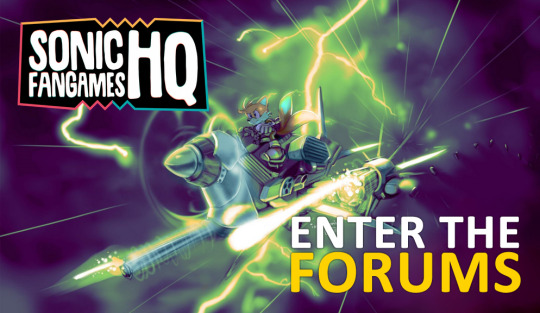
Corentin: How big is it? Do most developers know each other? Help each other? Sometimes are jealous of each other?
Back in the day, when everyone was centralized in SFGHQ, everybody knew each other, yeah. We were like one big family (in both good ways and bad). Nowadays, with everyone so spread out, it's almost impossible to keep track of it all. There's always a bunch of games at SAGE I've never heard of before, because they come from Gamejolt or some other fringe community I don't frequent. As a result, I imagine the fan gaming community is fairly large.
People don't usually help each other very much. Not for any kind of rude or territorial reasons, but generally because fangames tend to be a very personal, focused thing, and most people have tunnel vision regarding what they want. Everyone's trying to fulfill their dreams and that usually means going it alone, as everyone else is doing the same thing, with their own dreams. There are always exceptions, though. For a long time, Sonic Epoch, a fangame that continued the 1993 Sonic Saturday Morning Cartoon, was a team of three or four people writing the game's script and two or three musicians. Sonic Robo-Blast 2, one of the oldest fangames still in active development, has probably had dozens of people work on it over the years (I personally worked as a texture artist for them briefly). I also helped out on Sonic Time Attacked, one of the most famous classic fangames. Its developer, Jamie Bailey, was nearing completion on the game, but was struggling to produce the small handful of cutscenes he planned to have. I was kind of known for having nice cutscenes in my games, so I helped him out. Also, nowadays, with the advent of Unity making 3D games more viable, teaming up with multiple people is starting to become increasingly necessary. Sonic Utopia is being developed by at least four or five people, I think. Sonic World, a fangame written in Blitz3D, has probably had a dozen contributors by now. You can't really be a solo developer on those kinds of games, they take too much work.
Jealousy is definitely a problem. It's unsurprisingly difficult to draw the line on what's okay when you're making games that are 99% made from content borrowed from official games. If we're borrowing sprites from Sega without asking, why can't we borrow sprites from each other? The answer was always because that person was a member of the community, and they went to great lengths to custom-make something for their game, so obviously they weren't going to let anyone else use it. But, then, nobody had ever asked Sega if it was okay, so why should any of it be okay? That was occasionally a debate, and never with clear answers. Regardless, there were always accusations flying about who was stealing what from where. In particular, I remember a huge war breaking out over the usage of sprites created by a user with the handle "N8Dawg." He had custom-made a set of sprites all by himself, practically professional quality, and after abandoning his own project, decided to turn his artwork over to the community. But he did not do so publicly; he selected a few individuals that he thought would benefit from his sprites, and very quickly, access to these graphics turned in to sort of status symbol in the community. It was a nightmare. There was a lot of arguing over who got to use those sprites, and who had obtained them officially and who had stolen them from another fangame. Eventually, I think N8Dawg agreed to just release them publicly to stop all the arguing. I still have the files.

Corentin: How do you explain than the Sonic fangame scene is so active? What make Sonic so special? Is that because of the characters? Of the mechanics?
Generally speaking, I think fans make content to fulfill a need they aren't getting from the source material in question. This is why you get fanfiction that is so centered around romantic pairings. If nobody is giving it to them, people will always make what they want to see. Fans started making their own Sonic games after the franchise was more or less put on pause for five years in the mid-1990's. Sonic Team stepped away from Sonic games after making Sonic & Knuckles to try and let things rest, but there were a lot of people out there that were clearly hungry for more. So, they simply started making it themselves. You saw the same thing more recently with AM2R (Another Metroid 2 Remake). By the time that project finished, it had been something like 12 or 13 years since the last 2D Metroid game. Fans just made their own, because that's what they wanted to see.
The funny thing about Sonic is that Sega hasn't really kept the franchise under control. There are many, many different versions of the character, each one unique to itself. The Sonic from the Saturday morning cartoon is a different character from the Sonic in the classic games, which is a different character from the Sonic in the Archie comics, which is a different character from the Sonic in the Fleetway comics, so on and so forth. What this ultimately means is that you have tons people who come to Sonic the Hedgehog for wildly different things. Even narrowing it down just to the games, the Sonic franchise has had enough variance that there's a lot of debate over which games are "the good ones." When you consider what I said earlier about people making things that they want to see, there are a lot of Sonic fans out there who feel as though they aren't being served. Fangames end up a very good way to work out those frustrations.
Unfortunately what this means is that everyone has a different answer for what makes Sonic special. For some, it definitely is the characters. A lot of people were upset when Sonic Adventure 2 was first announced, because early media implied Tails wouldn't be making an appearance in that game. There are people upset right now because characters from the canceled Archie Comics haven't made it over to the new IDW Sonic comics. Other people are more about the game mechanics. The biggest splits there are between people who like the Classic 2D Sonic games, people who like the Sonic Adventure games, and people who like the super fast modern games like Sonic Generations.
Sonic faces some very interest design challenges, I think. The controls in those classic 2D games are still very unique, even among today's games. I think that also contributed to the sense that some fans were being under-served, because for the longest time, through games like Sonic 4, Sega was quite clearly trying to replicate those old games, but they weren't getting it right. Because it's not an easy thing to get right, really. Sometimes, it can almost feel like Sonic is successful by accident, like the stars and the planets align in just the right way at just the right time to produce something that could never exist at any other point in time. That'd certainly explain some things.
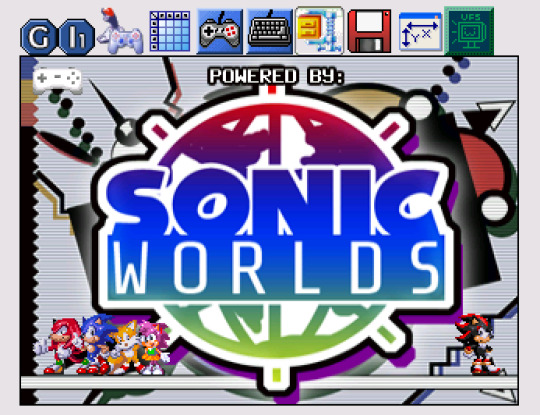
Corentin: According to you, Sonic fan games are popular because it's been a while since the last decent old school Sonic game. That's probably a big part of the explanation, but that can be the only one : Metroid fan games aren't as popular, F-Zero fan games aren't as popular, etc. How do you explain than Sonic resonate so much with his fans?
Not to dodge the question more, but I think that’s the riddle a lot of people have tried and failed to solve, even Sega themselves. As I said earlier, Sonic almost seems to be successful by accident. There’s a long story to be told here about Sega in the 90’s, some of which was told in Blake Harris’ “Console Wars” book. The gist is that Sega of America and Sega of Japan didn’t get along. Information I’ve read suggests that Sega of Japan saw themselves as genius artists and Sega of America pushed back against their esoteric ideas because they weren’t seen as financially viable. The two sides were constantly disappointed by each other’s demands, and Sonic was born out of this clash of ideals.
The entire reason it’s been so difficult to nail down what makes Sonic special is because Sonic was not the product of a single person, a single art style, or a single anything. It was more like an inexperienced chef haphazardly adding ingredients to a meal and accidentally making something amazing, but never being able to replicate the recipe.
In Sonic’s case, by the time anyone asked what the recipe for Sonic the Hedgehog was, the whole thing had gained too much momentum to be stopped. When something gets popular enough for a long enough period of time, it ends up taking on a life of its own. Once enough fans embrace it, it cannot be killed or destroyed. Think about Transformers, and how sometimes there were many years between movies or TV shows, but were still Transformers fans out there on message boards or at conventions. There will always be Transformers now, in some form or another, until the eventual extinction of the human race. The same is likely true for Sonic the Hedgehog. I mean, the Sonic franchise has already weathered some pretty dark times, but it’s still here. You couldn’t destroy it if you tried.
If you really want me to define what I think makes Sonic special, I think it’s because there’s never been anything like it. Not in 1991, not in 1999, and not even now. It really comes down to two things:
One, Sonic was one of the first true “characters” in gaming. You had guys like Mario, or Mega Man, that were duty-bound to be heroes. They didn't have much personality beyond that, if they had any personality at all. Sonic had that smirk, he was always waving his finger at the player, or getting visibly impatient if you made him wait around. Sonic brought the next level of characterization to games. That continued through games like Sonic Adventure; having that many playable characters, each with their own narrative threads that wove together in to a larger story was unprecedented in 1999.
Two would be how Sonic plays. We've had games like F-Zero, or Burnout, games that are really really fast, but never anything like the way Sonic does it. Sonic gives you the ways to interact with the world that most fast games shy away from. The best Sonic games make you feel like you're driving a rollercoaster, combined with the controlled chaos of a pinball table. You're supposed to be bouncing off stuff, getting thrown into the air, and feeling a little overwhelmed at first. The danger of losing control is part of the fun, but it's a difficult line to walk, and it has to be in balance with the other elements like platforming or enemy combat. It’s a unique blend of high-speed action with a sharp personality that you can’t get anywhere else.
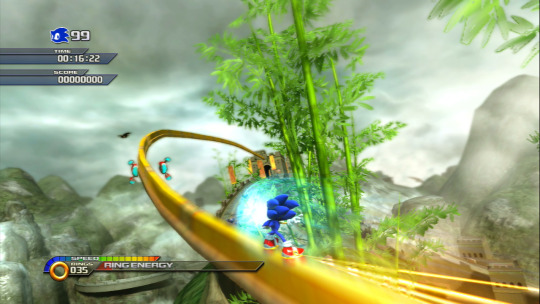
Corentin: What are the biggest difficulties of developing a Sonic fangame?
Specifically regarding Sonic games, the biggest hurdle is probably control. It's such a big problem that a lot of fans have banded together to write programming guides and even create collections of code to make it easier for newbies to wrap their heads around how it all works. The physics and momentum of how Sonic moves are so tricky to properly implement that not even Sega really does it right, for example with Sonic 4, and they're the ones that invented those physics in the first place.
In general, I also think a lot of people underestimate how much work it takes to finish a game, even when most of the coding is already done for you. A lot of fangames get started, but never finished, because people lose interest before they cross the finish line. Staying focused and keeping perspective are probably the two most important things when it comes to developing any sort of game. You have to know and respect your own limits. You aren't going to make a game in a weekend. Depending on how ambitious you are, you won't even finish making game over a single summer vacation. You have to be ready to commit for the long haul. The best fangames take years and years of work.
Understanding criticism would be another difficulty. Over the years as I've reviewed games at SAGE, I occasionally find someone who gets really upset when I criticize their game. If somebody doesn't like your game, you have to learn to not take it personally. Criticism is valuable data that can be used to make better games in the future, so pick yourself up, dust yourself off, and use that information to improve. There can always be a next time, so don't get discouraged.

Corentin: Few fan games come to fruitition. Do all developers of fan games hope they will finish their game, or are they aware that's very unlikely?
Yes, I think nearly all fangames are started with the intention they’ll be finished some day. I can only speak from my experience, but it really seems like everyone, including me and all my friends, initially gravitated towards fangames when we were young. Especially in that youthful innocence, you never really think about how much effort goes in to something. I remember sending letters to Sega in the Saturn era, 1996 or so, regarding the cancelation of Sonic X-Treme. I tried to give them reasons to keep working on the game, and the things I was suggesting were so incorrect it was beyond the point of comedy and was actually a little bit sad. How movies, or video games, or whatever actually get made seems like a kind of magic until you’re faced with the reality of it all. It’s easy to see how somebody might decide to make and finish a video game without fully realizing how long that’s going to take.
It also depends on your definition of what “finished” means, I guess. I’ve created fangames that are not complete, full games, but I consider the project done, because I finished what I set out to accomplish. Even if that was only a couple of levels and a boss fight.

Corentin: Is Sega ok with fangames?
They seem to be, at least for right now. A few years ago, there was an Unreal Engine fangame, "Green Hill Paradise", and the official Sonic the Hedgehog Twitch account left a comment in their stream chat congratulating them on a job well done and encouraging others to keep making fangames. Sega operates that account, so while it was not a legally binding document, it was at least some kind of official statement of approval.
But I say "at least for right now." Fangames are, according to copyright law, illegal. Technically speaking, so is fanart and fanfiction, because any unauthorized use of copyrighted content is illegal. Fair Use mostly covers educational or academic purposes, which don't apply here. So the only reason fangames, fanart, and fanfiction are okay is if the company in question turns a blind eye to the law. Sega is turning a blind eye to the law right now, but that might not always be the case. Obviously we've had decades worth of fangames at this point, but it only just recently lead to something like Sonic Mania. Hypothetically speaking, a few years from now, maybe somebody changes jobs and now there's a different person overseeing how Sega handles protecting their copyright. Then, this hypothetical person decides fangames are no longer okay and shuts the whole thing down. That could happen, and the law would support it.
Something like that actually happened very recently. Sega opened an online shop where they sell t-shirts and other merchandise, which triggered a wave of cease & desist notices directed at fans who were selling their fanart on shirts through sites like Teespring and Redbubble. Fans have been doing this kind of thing for years, even bringing their custom-made shirts to conventions and selling them there. Again, the law says this is illegal, but Sega never seemed to care before. They turned a blind eye to it. But now Sega is selling their own official shirts, they have manufacturing partnerships they want to protect, and the circumstances changed. They stopped turning a blind eye to it and shut the fans down. So, really, who knows what the future holds.

Corentin: In your Sonic Mania review video, you regret that Sonic Team relies too much on nostalgia. But doesn't nostalgia what drive you as a developer of fangames?
Not always. The very first fangame project I started back in high school was called "Sonic Infinity," which imagined a future where Sonic was brought back to life with cybernetic implants in a world that resembled Mega Man X. I just wanted my games to be popular, so I figured by merging Sonic and Mega Man together, I could be popular in two places at the same time. That was around 1998 or so. I ended up getting bored of that pretty quickly, and a new project caught my attention: a fangame called "Sonic: The Fated Hour" which was to be a Metroid-style Sonic game where you'd explore an open world and find gear upgrades. I started that project around the year 2000. Everyone else was still making fangames that continued the story of Sonic 3 & Knuckles, but I wanted something that felt closer in tone to the Sonic Adventure games, which were current at the time. So it had a lot of story and cinematic sequences with artwork I drew myself.
I spent nine and a half years on The Fated Hour trying to figure out the best way for Sonic to work as a Metroid game before I gave up. When you work on something for that long you start to forget why you even started the project in the first place, so I decided it would be best if I just moved on. I still think about that game from time to time, about ways I could do certain things, but I refuse to let myself get trapped in that cycle again.
Along the way there was also a fangame I was working on called "Shadow of Chaos" that would have parodied how self-serious Sonic games are sometimes. That game didn't even really play like a Sonic game at all. You controlled Shadow, who could shoot guns and drove a Vespa scooter. It was intentionally ridiculous. I ended up getting a lot of friends to help me make levels for that one, but I lost a lot of the files to a hard drive crash. Many years later I ended up finding a backup of those files, but by then, the moment had passed.
And those are just my games. In my Sonic Mania review I had footage of other projects from my friends. There was “Thirdscape”, which was part of a trilogy of fangames about an alien invasion. The game took place many years after Sonic Adventure, and featured a grown-up Tails that was taller than Sonic. After Sonic Adventure 2, a lot of fangames were Sonic and Shadow working together, like Aytaç Aksu’s “Chaomega” and Showoffboy’s “Sonic Ki”. Then you had truly weird games, like TLSPRWR’s “Sonic Bible Adventure”, which fittingly takes Sonic through the events of the bible, or RC’s “Crazy Cabbie Sonic” where Sonic must deliver pedestrians to their destination before time runs out, like in Crazy Taxi.
Then you even have games like “Freedom Planet”, which originally started out as a Sonic fangame starring “Lilac the Hedgehog” as she traversed Dragon Valley collecting gold rings. Now, Freedom Planet is an original game starring Lilac the Dragon, available to purchase on Steam, Wii U, Playstation 4, and soon, Nintendo Switch, with a sequel in active development.
The connecting thread is that these were all side-scrolling games, but that was more about the limitations of the tools than any real desire to focus on nostalgia. The fangaming boom happened because of easy-to-use game creation software, but that software was universally limited to making 2D games only. Making 3D games often meant knowing real programming languages. The only 3D fangame for the longest time was “Sonic Robo-Blast 2”, which itself mainly started as a mod for Doom 2. In the big picture, Unity is a fairly recent invention, and we’re only just now starting to see a larger number of fangames using it.
If there was a focus on nostalgia, it was largely because those old Genesis games are the most universally beloved. It’s like I said earlier, fans tend to create the things they want to see. So you had a lot of fangames over the years about returning to Green Hill Zone. I think it was that fact by itself that probably pushed Sega to invest so much more heavily in nostalgia with Sonic 4, which in turn sparked even more nostalgia-focused fangames from fans determined to right Sonic 4’s wrongs. In a sense, that’s sort of why we have Sonic Mania now.
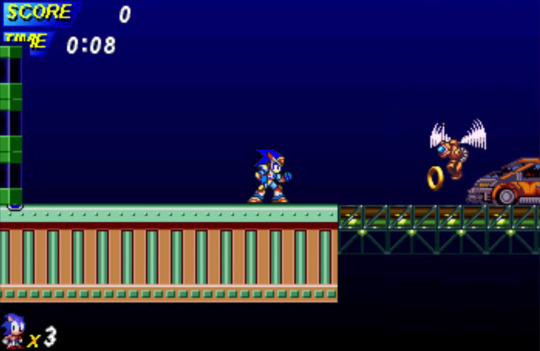
Corentin: What are the 3 or 4 best fan games people should absolutely give a try?
Sonic Robo-Blast 2 is unique to fangames insofar as it’s big enough to support its own community. It’s worth looking in to just to see how far the development team has taken the Doom engine; they converted a first person game in to a fairly decent 3D platformer. There’s also a huge modding community for the game, and an active multiplayer scene. Though it’s not ready yet, the next big update to SRB2, version 2.2, will finally overhaul the entire game to add proper support for sloped surfaces, something Doom didn’t originally support. It’ll probably be the most significant update the game’s ever had in its 20 year development. (trailer for 2.2: https://www.youtube.com/watch?v=3cfK3EWnn2E)
I don’t want to be negative, but a lot of people would probably say Sonic: Before the Sequel or Sonic: After the Sequel. Those are two games by LakeFepard, who managed to crank them out in record time. Something like a year each, maybe less. They’re very creative games with incredible soundtracks that rival even official Sonic games. But something about them has always felt a little “off” to me in a way that’s hard to describe, and recently Lake has apparently had a falling out with SFGHQ. I’m not really in the loop on the drama, though, which is probably for the best.
I’d recommend Hez’s “Sonic Classic.” It’s a massive fangame that was inspired by Sonic 4. It can feel a little messy, but its heart is in the right place, and there’s tons of stuff in it. It was almost like having Sonic Mania before Sonic Mania even existed.
That’s already four, but gosh, there’s more. Petit Hedgehog is just a demo, but it’s a cute Sonic-Advance-inspired game with 100% original graphics. I’d also recommend OzcrashSonic’s Sonic World, which I mentioned earlier, because it’s so big and complex; it has something like 30 playable characters and 50 levels, it’s nuts. Sonic vs. Darkness is also just a demo, but it’s a fantastic game in the style of Sonic Rush. There’s probably more, but those are the games I think about a lot.

Corentin: Could you tell me more about SAGE? Why did you start it? You're not responsible of it anymore, right?
No, I’m no longer responsible for organizing SAGE. The people handling SAGE now still check in with me from time to time when they want my opinion on big decisions, but I mostly just cover the event by writing reviews for the games available. It’s been long enough that I my memory is a little fuzzy, but I think I did the first four events, two every year, until I gave it up. I was going through some difficult emotional things in my life at that time, and the additional stress of putting together something like that was having a negative impact on my life. Since then, it’s grown to become much bigger than something I could have accomplished on my own.
The first SAGE was on September 9th, 2000, one year after the launch of the Sega Dreamcast in North America. I was still in high school at the time.
I started it because it was hard to talk about my fangame projects with anyone who wasn’t already in SFGHQ. There was a long-running stigma fangames faced; many people thought they were a form of piracy. They were put in to the same category as pirated bootleg games you’d see on the black market. So it was impossible to have a conversation or get much coverage on gaming-oriented sites.
I think it was around this time I started reading a website called Insert Credit and learning of what Japan called their “doujin gaming” scene. Doujin is a Japanese word often used to describe fan-created content, and in Japan, you can sometimes find doujin manga sold on shelves right next to the official thing. Now there were doujin games -- Japanese fangames -- that were gaining traction on the internet. That kind of acceptance was fascinating to me.
So I started SAGE to try and bring that kind of acceptance over to what my friends and I were doing. I wanted to dispel the stigma that fangames were a type of piracy. Or, at least, not any closer to piracy than fanart or fanfiction.
It didn’t really work. We got a couple smaller sites to post a small blurb about the very first year SAGE launched, but nobody bigger than that would touch it. The stigma remained.
SAGE ended up being successful as a secondary function, as it gave the community milestones to orbit around. Instead of just making games and releasing them whenever, now people were working to get things ready to show at SAGE. Milestones like that are something professional studios use throughout game development to measure progress, and SAGE gave the fangaming community something similar to strive towards. It created a healthier structure for making fangames, and to be honest, it had done so kind of by accident. It wasn’t until many years after I stopped doing SAGE that I realized the entire reason it’s still around is because it became that anchor for development.
And, in the long run, I think SAGE lasting for 18 years did end up helping fight back against that stigma, even if it wasn’t immediately apparent back when I first started. The stigma still exists, you still get comments from people who don’t understand why someone would risk spending all of that time on a fangame that might get shut down, but at least the conversation is more open now than it ever has been.
Capcom sponsored a fangame a few years ago called “Street Fighter x Mega Man”. Microsoft has openly stated they’re fine with fan-content of their original properties, which has lead to things like the “Red vs. Blue” Youtube series and Halo fangames like “Installation 01.” Valve has been increasingly open with its fan community, even co-publishing a fan-remake of the original Half-Life, called “Black Mesa.”
And, of course, we now have Sonic Mania, whose team is made up almost entirely of old SFGHQ users.
Somewhere along the line, SAGE may have helped bridge some of those gaps. That’s pretty cool.
#sage#sonic amateur games expo#le monde#corentin lamy#fan game#sonic the hedgehog#sega#sonic team#sonic mania#interview
20 notes
·
View notes
Note
Even though Ian Flynn probably won't write for Archie anymore, I can say he will leave a strong legacy on the Sonic Franchise more than Penders ever will. I mean he not only did the comics, but also episodes of Sonic Boom. If he ever continues to work in the Sonic comic business, I know he could do a good job.
*nodnod* Oh yes. Unlike Penders, Flynn was the contributor for the majority of the Sonic stories on his run, both in the main book and in universe, something Penders never really was. He’s got more story credits, full issue story credits at that. His legacy in Sonic is far more expansive and impressive.
15 notes
·
View notes
Photo
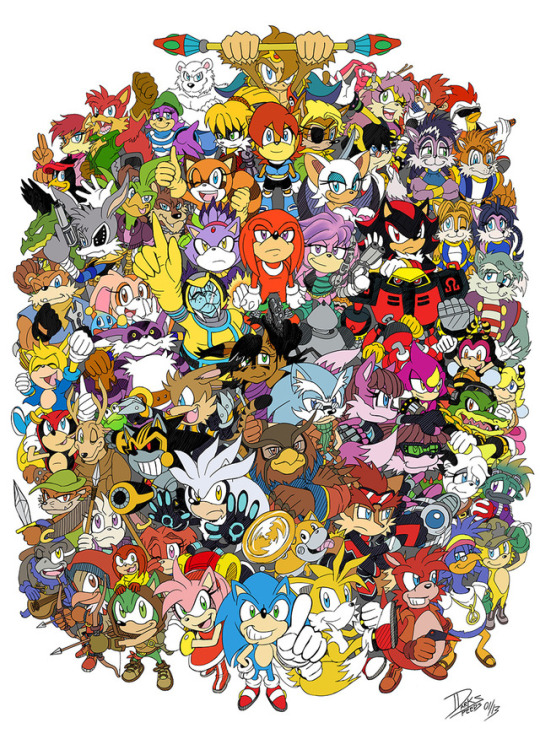

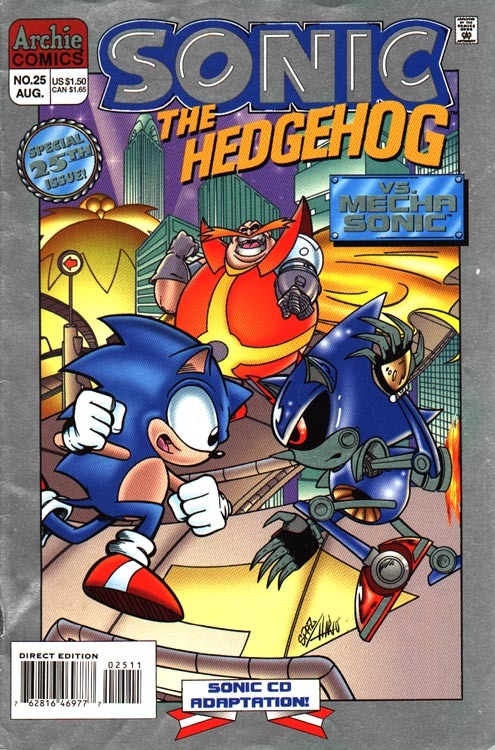

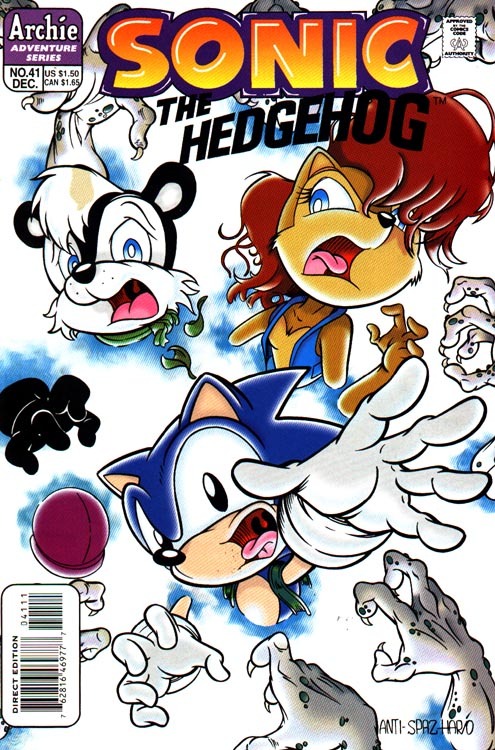




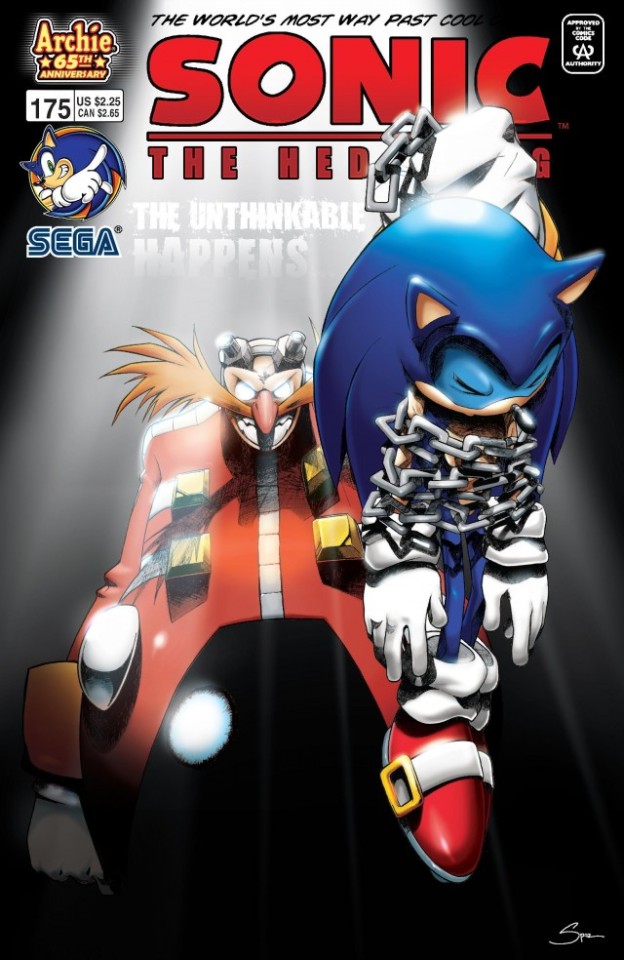
RIP Archie’s Sonic the Hedgehog comic (1992-2017)
After 25 years and nearly 300 issues, Archie’s long-running Sonic the Hedgehog comic was officially cancelled earlier this week. The writing’s been on the wall for a while now, since the comic went on a forced hiatus several months ago and none of the creators were allowed to publicly discuss it due to ongoing negotiations between Archie and Sega. But this Thursday, the book’s final fate was declared, and it looks like the Freedom Fighters - who once announced that they could handle anything - couldn’t quite beat the threat of cancellation.
A lot of people dunk on the Archie Sonic comic for being overly convoluted, going through some pretty low points or appealing primarily to furries, and all of these things are kinda true, except for maybe the furry one. But warts and all, Archie Sonic is a glorious beast of monstrously complex proportions. First of all, let the fact that Sonic holds the record for having the longest-running North American comic for a licensed character sink in. Seriously, this series ran from 1992 to 2017 and nearly reached 300 freaking issues. In a time when most comics from Marvel and DC can barely reach double digits before either being renumbered to generate a temporary boost in sales or flat-out cancelled, Sonic the Hedgehog kept chugging along, stealthily reinventing itself from its original status as a slapdash funny book to an ongoing saga that manifested lore so deep that it warranted the release of an entire encyclopedia to help people keep everything straight.
What’s even more interesting is that Archie Sonic became the one place where you could still see characters carried over from the DiC Saturday morning Sonic cartoon show, which was produced in 1993. The show, affectionately dubbed SatAM by everyone who watched it back in the day, frankly doesn’t hold up that well and is a good example of nostalgia goggles at work. It had an incredible theme song, though (SONIC! HE CAN REALLY MOVE! SONIC! HE’S GOT AN ATTITUDE! SONIC! HE’S THE FAAAASTEST THING ALIVE), and the show did do an admirable job of developing a backstory for a mascot who, at the time, had no characterization other than the fact that he was fast and collected rings. SatAM fixed this by putting Sonic in the surprisingly dark world of Mobius, a place ruled by Dr. Robotnik, a dictator who had “roboticized” the population by turning them into droids. It also gave the hedgepig a variety of characters to play off of, like Princess Sally, Antoine the cowardly French fox, Bunnie the half-roboticized rabbit and Rotor the walrus. Along with Tails, this lot was collectively referred to as the Knothole Freedom Fighters.
Archie Sonic got its start telling stories with the Freedom Fighters while they were still on air, and even after the show was cancelled, the comic continued using them, essentially turning itself into season three of the cartoon. As the decades passed, the SatAM characters and story threads evolved and changed in wondrously unexpected ways - Sonic and Sally fell in love, the original Dr. Robotnik was killed and replaced with a robotic version of himself from an alternate dimension, Bunnie and Antoine got married and Mobius was revealed to be a future version of Earth that was attacked by the Xorda, aliens who had unleashed gene bombs on the planet, mutating the wildlife into anthropomorphic animals. (This was my goddamn favorite batshit crazy bit of Sonic comic lore ever.) Furthermore, the comic increasingly began introducing more elements from the actual Sonic video games, which had finally developed deeper stories of their own thanks to the advancement of technology. So you had stuff like Sonic and the Freedom Fighters teaming up to fight Perfect Chaos and meeting Silver the Hedgehog and Blaze the Cat. It was an unusual, unique combination of Western and Eastern concepts melding together in one pictorial arena, and it made Archie Sonic feel special.
Speaking of the games, the book was also special because it damn well carried Sonic’s presence in North America during the years when the blue guy wasn’t starring in many video games (the Sega Saturn era) and couldn’t star in any decent video games (the Sonic ‘06 era). Even when Sega was releasing shovelware that damaged the brand, Archie Sonic kept pumping out issues, and its sheer determination to keep going won it legions of dedicated fans. Many of these people, including myself, got stuck on the comic at a young age and stayed long-term. I personally started picking up issues in 1994 or 1995, so basically only three or so years after the book was out. I think I was seven years old. A few years later, I got a subscription and had the comic delivered to my mailbox every month. (I still remember my first issue - it was number 41, when Sonic, Sally and that douchebag skunk Geoffrey St. John went to the Zone of Silence to rescue King Acorn.) The subscription continued until I was in college, and only ended around my junior year, when I forgot to renew it because I was too busy applying to go abroad after graduation.
In short, I subscribed to a periodical about a damn blue hedgehog for a large majority of my life. Even when I stopped regularly reading around issue 180, I always kept abreast of the book’s developments (like that crossover with MEGAMAN!) and told myself that I’d eventually catch up on the stories I missed, likely in the excellent Sonic Select and Sonic Archives trade paperbacks that Archie was publishing. And there were tons of others like me. The Archie Sonic community is such a vibrant one, filled with 90s kids who grew up on this book and even older folks like the crazy Dan Drazen, a 60-something librarian who wrote the most detailed (and overly picky) online reviews of every issue. Many of these fans went on to work for the comic at one point or another, like the incredible Dawn Best and fan favorite Ian Flynn, who swooped in as a writer in the late 2000s and saved the book when it was suffering from a spell of plodding stories. For a lot of us, Archie Sonic was the preferred Sonic canon, and we got pissed when Sega pulled awful jump the shark moments outta their butts - like having Sonic hook up with human princesses in his broken 2006 game - when there was a wealth of solid lore in this weird little comic coming out in America that they always seemed content to ignore.
In fact, the only time Sega really paid close attention to the book was when Ken Penders launched a lawsuit against it, which may have been a contributor to its eventual cancellation. People better than me have already scripted lengthy writeups about Mr. Penders, and I encourage you to read this extremely in-depth take on the whole fiasco, which is a bizarre tale of copyright arguments and delusions of grandeur worthy of any John Grisham novel. But in a nutshell, Ken was a former writer who helped guide Archie Sonic away from simple gag strips and into the realm of full-on adventure tales. His control over the book was major until he was fired, and a few years later, he went on a vehement quest to prove that he owned all characters he had created while working for Archie, including series mainstays like Julie-Su, Knuckles the Echidna’s girlfriend. He ended up suing Archie multiple times and won on legal loopholes, which prompted him to start attacking the book’s current team while declaring that a buttload of barely-related story concepts were his. He also tried suing Sega when Sonic Chronicles: The Dark Brotherhood came out, claiming that the enemies in the game were too similar to ones he had whipped up. Archie eventually had to come up with a plot device to kill off (trap in another dimension, really) all of the characters he had created during his tenure, and eventually they instituted a full reboot to wipe continuity clean and remove all traces of the lawsuit from history.
Unfortunately, the legal issues did some pretty heavy damage to Archie’s relationship with Sega, who were reportedly pissed that the American comic company had let things get so screwed up. And I don’t blame them. To the Sonic fan community, Ken Penders is largely loathed as a megalomaniac who sabotaged a long-running comic for personal gain. But he doesn’t deserve all of the blame, and he did put out some good stories in the day before going bonkers. Archie’s also at fault, both due to their not-so-great freelancer deals as well as their incompetence at handling lawsuits. (At one point the company even fired their entire legal team and hired new attorneys, yeesh.) In recent years, Archie also seems to be terrible at handling their finances, even though they’re currently spearheading Riverdale, a successful show on the CW that’s made all of their high school characters into hot, emo Millennials. (I call it the “Archie Sex Show” in my head.) I’ve heard rumors that company management wants to streamline their output to ONLY focus on Riverdale-related stuff, and seeing as how the Ken Penders business was a tremendous waste of time that ripped some large holes in their relationship with Sega, it only makes sense that both companies would decide to part ways.
So where do we go from here? Well, it was suddenly announced today that IDW Publishing would be the ones picking up the Sonic license for a relaunch of the book in 2018. IDW’s a fit place for Sonic, since they currently publish the Teenage Mutant Ninja Turtles…which Archie once owned the license for. (Funny how these things go in circles, eh?) Unfortunately, I have a feeling that the current arc that was going on in the Archie books - a charming retelling of the Sonic CD story - is going to go unfinished, and I’m also fearful that we’ll be saying goodbye to the DiC Freedom Fighters. I’d LOVE to be proven wrong, and it would warm my heart to see Princess Sally, Bunnie Rabbot, Antoine, Rotor and Nicole survive a change in publishers. But since Sega’s never “officially” acknowledged those characters in a game (except for Sonic Spinball, which was made by an American studio and doesn’t really count) they’re likely going to be classified as expendable cannon fodder that are no longer relevant.
There is some hope, though. Perhaps a miracle will occur and IDW will have the good sense to re-hire guys like Ian Flynn or maintain some semblance of the continuity that an entire generation knows and loves. Until the day we know for sure arrives, I’ll just have to re-read my old issues, revel in the glory of covers drawn by SPAZ, laugh at insane crossovers like the time Sonic met Spawn, and remember an era when a hedgehog with attitude and his Knothole friends kicked Dr. Robotnik’s butt and brought me twenty plus years of wonderful adventures.
For Mobius! For freedom!
The header image of the Archie Sonic cast was drawn by darkspeeds and found on Deviantart. The cover images are just a few of my favorites from the days when I was subscribed to the book, and were taken from Comic Vine and Cover Browser.
7 notes
·
View notes
Text

Transformers (Skybound) #4: Cover D (1:25 Incentive)
Art: Sanford Greene
#Transformers#maccadam#Skybound Entertainment#Skybound#Image Comics#Soundwave#Optimus Prime#Arcee#Ratchet#Wheeljack#Cliffjumper#Sanford Greene#2024#Archie Sonic Contributors
171 notes
·
View notes
Text
Since this is an Archie Sonic blog, it's probably worth mentioning that, unfortunately, Archie is getting into NFTs
This particular bad idea is more than just a series of PNGs (or links pointing to said PNGs, yes we've all seen Line Goes Up). Oh, it's much worse. The article linked in the tweet above claims that the funny libertarian Pogs based on the Archie Horror imprint will "let holders contribute character details and storylines that could potentially be used in future comic books." In other words: holders will be invited to a Discord group, and they'll be able to make up headcanons about their shitty little Archie OCs from their NFTs, which Archie's writers can choose to add to the canon of whatever Archie Horror comic this ties into. They also might get to vote on story stuff or something, as they want to "keep it very, very democratic" so that "everyone gets to have their voice heard"
If projects like the Red Ape Family Show or the Cryptoland pitch video are any indication, then I'm sure letting a bunch of crypto assholes steer the creative direction of a piece of media can never go wrong
It's also worth noting that there's no mention of these community contributors being compensated for their ideas making it to print, which could very well mean they would be paying Archie for the privilege of giving them creative ideas. The future of entertainment, indeed!!! (EDIT: Okay so the official site for this bullshit says that there will be "credit and royalties for selected artists," but if you toss out a bunch of ideas in the Discord and don't get picked? It's just fucking spec work.)
You know, honestly, maybe we ARE lucky that Archie lost the Sonic license. Jesus fucking Christ. Not that Sega's looking much better since they're also thinking about getting into NFTs right now. But at least IDW isn't. What a shitshow
262 notes
·
View notes
Photo
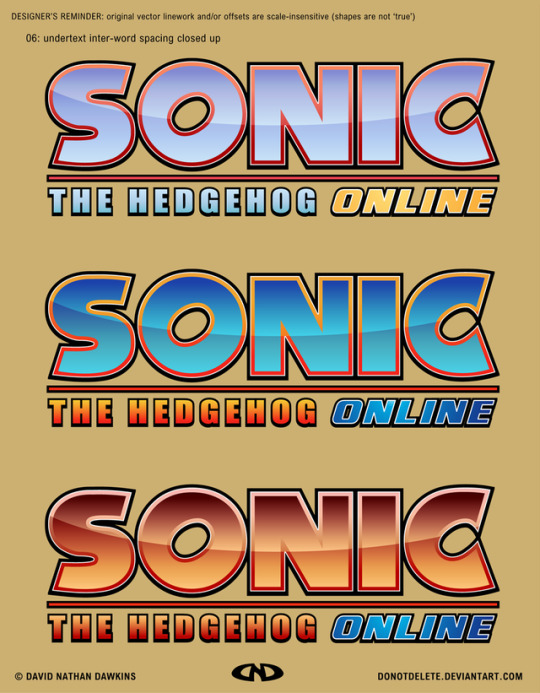

Logo designs for a comic project I'm helping out with.
Sonic the Hedgehog Online is a fan continuation of the Archie Sonic the Hedgehog comics - the original intent was to pick up from where the comic universe was rebooted following legal disputes brought up by previous contributors to the comic (which I'm not going to go into here), but since the future of the present Archie Sonic comics has become questionable who knows what direction the fan project might take?
The logo is actually a little bit too close to the original source material for my liking - but I was working to the very specific demands of my clients and this is what they wanted. I did have to rebuild the entire logo from scratch - and it was through my own effort that I made the 'ONLINE' part sympathetic to the pre-existing text. So I'm okay taking credit for the work I put into this - even though a lot of it is truthfully recycled from an older logo design which I had no hand in creating.
Sonic the Hedgehog is ™ and © SEGA/Sonic Team.
Logo Design and Artwork © David Nathan Dawkins.
#sonic#sonic the hedgehog#sonic the hedgehog online#online#logo#design#logo design#sonicthehedgehog#logodesign#dnd#donotdelete#doodletenet#david dawkins#daviddawkins#david_dawkins#david nathan dawkins#davidnathandawkins#david_nathan_dawkins
5 notes
·
View notes
Text
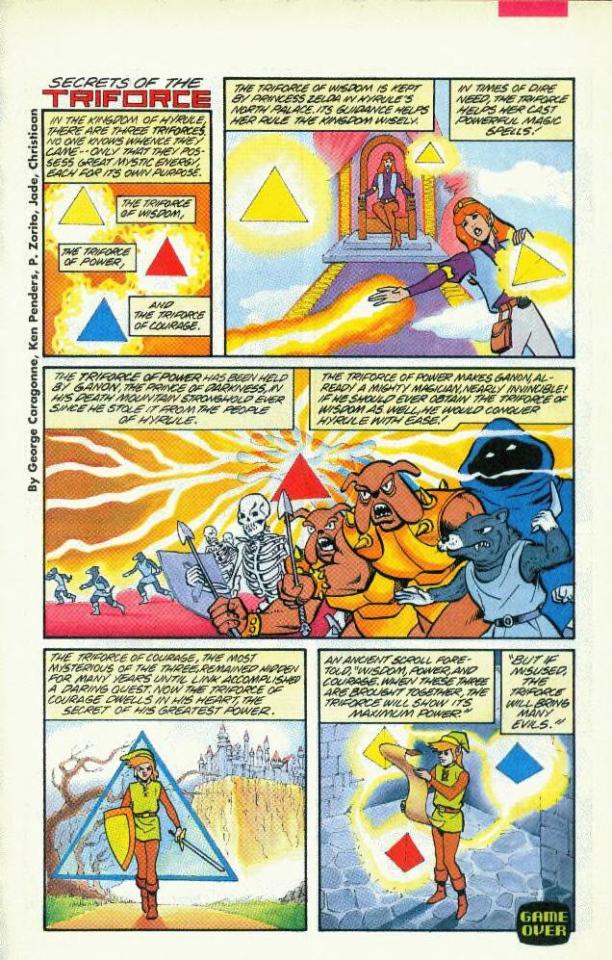
The Legend of Zelda #3: Secrets of the Triforce
Writer: George Caragonne
Breakdowns: Ken Penders
Pencils/Inks: P. Zorito
Letters: Jade Moede
Colors: Christiaan
#Valiant#Valiant Comics#The Legend of Zelda#tloz#Link#Zelda#Mobiln#Stalfos#Goriya#Ganon#George Caragonne#Ken Penders#P. Zorito#Jade Moede#Christiaan#Archie Sonic Contributors#1990
22 notes
·
View notes
Text

Adventure Time #10: Cover B
Art: Tyson Hesse
#Boom Studios#Kaboom Studios#Adventure Time#Atimers#Finn the Human#Jake the Dog#Ice King#Princess Bubblegum#Gunter#Tree Trunks#LSP#Lumpy Space Princess#Lady Raincorn#BMO#Peppermint Butler#Tyson Hesse#2012#Archie Sonic Contributors#IDW Sonic Contributors
83 notes
·
View notes
Text
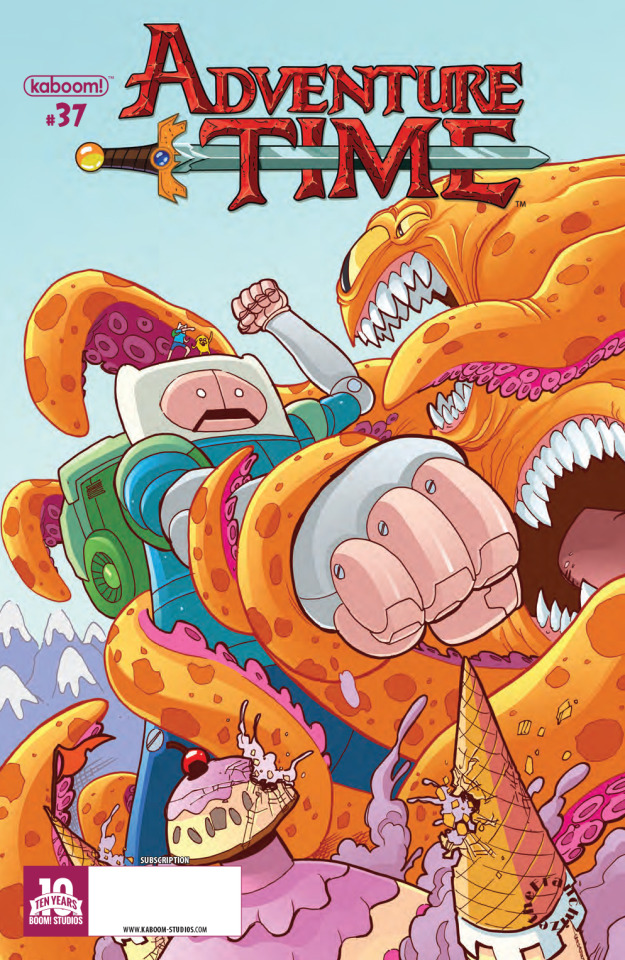
Adventure Time #37: Subscription Cover
Art: Jerry Gaylord
#Boom Studios#KaBoom Studios#Adventure Time#atimers#Finn the Human#Jake the Dog#Jerry Gaylord#2015#Archie Sonic Contributors
89 notes
·
View notes
Text
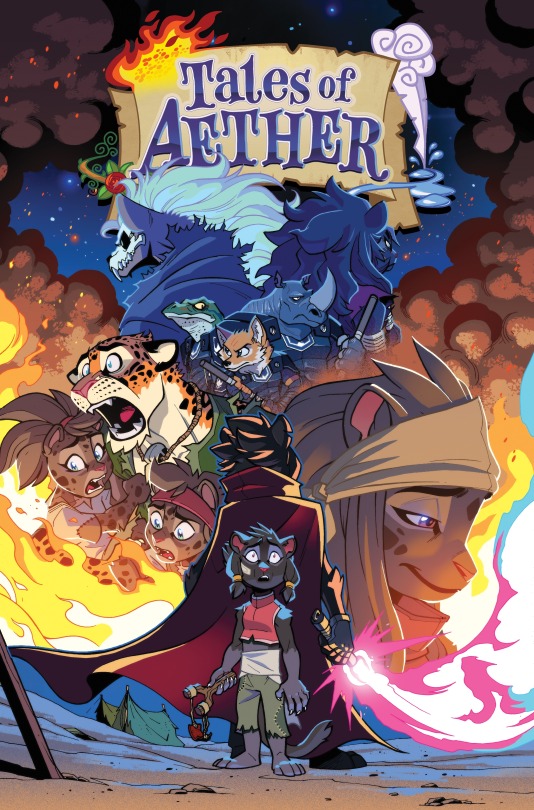
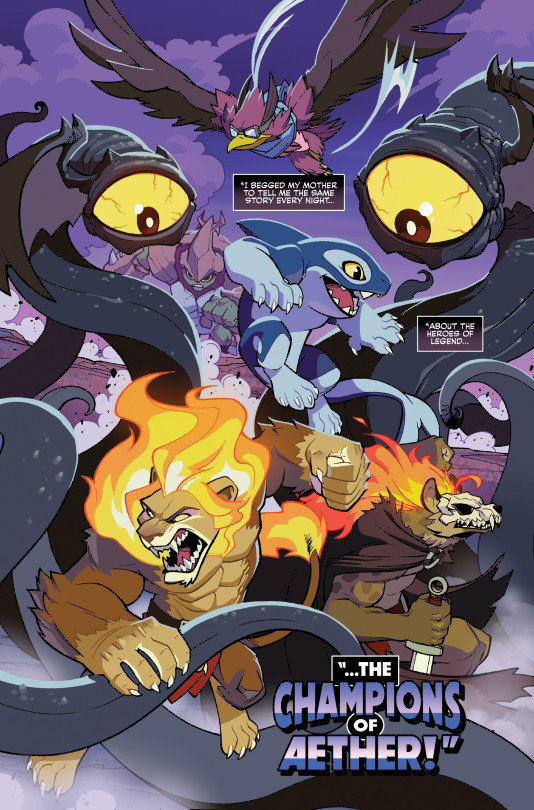
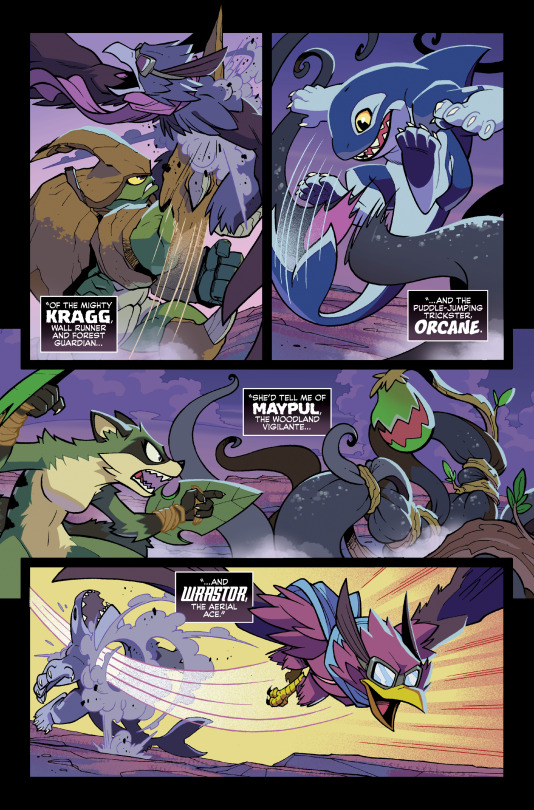
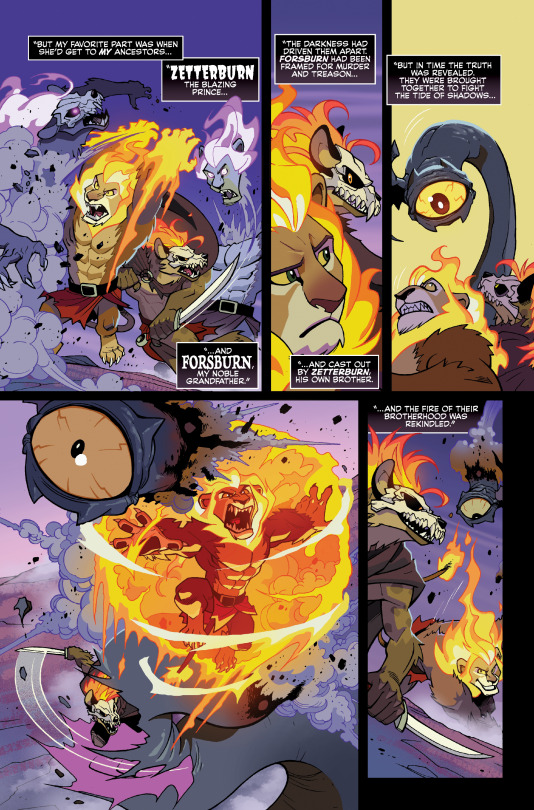

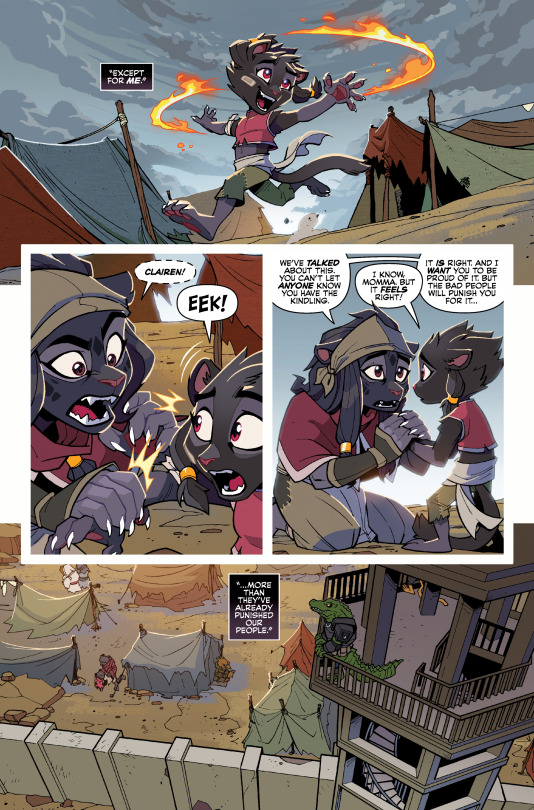
Tales of Aether #1
Cover Credits
Layout: Marc Knelsen
Pencils/Inks: Jack Lawrence
Colors: Matt Herms
Story Credits
Writer: Ian Flynn
Pencils/Inks: Jack Lawrence
Colors: Matt Herms
Letters: Jack Morelli
Editorial Team
Editor: Dan Fornace
Assistant Editor: Ian Flynn
#Aether Studios#Rivals of Aether#Tales of Aether#Clairen#Forsburn#Zetterburn#Kragg#Orcane#Maypul#Wrastor#Marc Knelsen#Jack Lawrence#Matt Herms#Ian Flynn#Jack Morelli#Dan Fornace#2021#Archie Sonic Contributors#IDW Sonic Contributors
54 notes
·
View notes